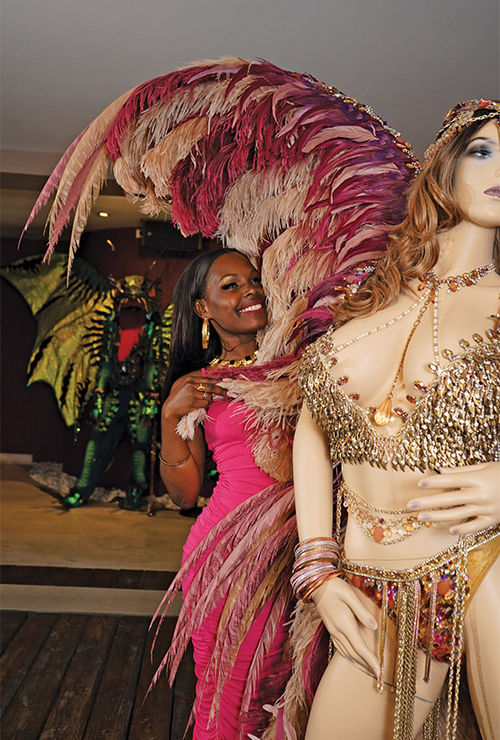Gerald Hart has been playing "mas," short for masquerade, at Carnival celebrations since he was a kid.
He was born into Carnival royalty: his parents, Lili and Edmund Hart, founded Harts Carnival, one of the early Carnival bands in Trinidad and Tobago. Hart went on to become one of the most prolific Carnival costume designers, creating thousands of the colorful outfits in the Caribbean and across three continents.
But Hart's latest and most personal creation is We Culture, an 8,000-square-foot Carnival museum in Maho Bay, St. Maarten.
"As a kid, Carnival felt like opening gifts on Christmas morning, and I would look forward to it every year with the same anticipation," he said. "The Carnival experience is unique, bringing people on the island together; everyone's filled with laughter and having a good time. And I wanted to bring the spirit of Carnival to the museum."
While Trinidad is considered the birthplace of Carnival in the Caribbean, Carnival celebrations in Grenada, Barbados and St. Maarten draw thousands of locals and visitors. The museum features exhibits that share the stories of how Carnival differs on different islands.
Hart's vision is to not only share his love of Carnival but also to educate people about the Carnival celebrations across the Caribbean and dispel misconceptions about the festival.

A visitor tries on a Carnival costume at the museum. The museum's creator, Gerald Hart, made his reputation as one of the islands' most prolific Carnival costume designers. Photo Credit: Courtesy of We Culture Museum
"A lot of people don't understand the history or culture of Carnival. For example, when people attend J'ouvert, they may look at the Jab Molassie -- or Molasses Devil [horned masqueraders painted in molasses] -- and think we're worshiping the devil, but it has nothing to do with that," said Hart. (J'ouvert is a street party that takes place before dawn.)
"J'ouvert was a protest and rebellion against slavery. It was a way for the enslaved to scare their masters and show them that Hell is waiting on them for the wrongs they have done."
Hart's excitement was palpable when I visited the museum in St. Maarten this past summer, and he gave me a tour of the new space.
Carnival deep dive
The museum is not just a collection of artifacts but an immersive experience. It's divided into several different rooms: one displays a 70-year timeline of Carnival with photos; in others, you can play Carnival instruments and learn about the stories behind some of Carnival's most famous characters, like the Jab Molassie and Pierrot Grenade, the supreme jester in Trinidad's Carnival lore. At the end of the tour, I got to try on a headpiece and matching wings, experiencing the Carnival spirit firsthand.
"In Trinidad, I used to teach people Carnival costume-making and the history behind it," Hart said. "It's always been important to me to share the knowledge and history of Carnival so it doesn't disappear forever. The museum is how I share these stories that are such a big part of my life."
Regardless of the island, Hart said one of the main principles of Carnival is fellowship and community -- something that he said isn't limited to just the Carnival events.
"Getting ready for Carnival takes place year-round," he said. "People are excited to make their costumes and play different characters. There are parties, shows, the crowning of the kings and queens and steel-pan shows. There's so much more than just putting on a costume. Carnival is a way of life."
By opening We Culture, Hart has achieved one of his life's goals. But the creation of the museum also fulfills a family dream.
"Opening the museum was one of my mom's dreams," he said. "She wanted to open a Carnival museum, but she passed away before it could happen. Being able to open this museum was a bucket list item for her and me."
Hart said he eventually hopes to include live entertainment -- musicians, dancers -- at the museum.
We Culture is open Mondays to Saturdays from 10 a.m. to 4 p.m., and guided tours are available.